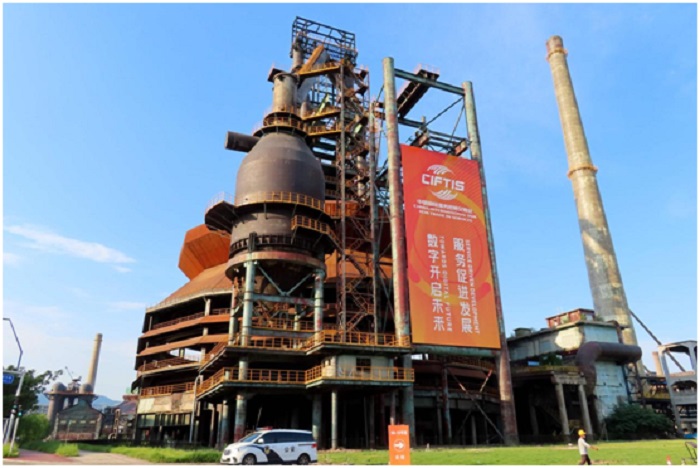



Beijing, whose service sector accounts for more than 80 percent of its GDP, has speeded up the development of a national integrated demonstration zone for greater openness in the service sector and a pilot free trade zone (FTZ), and witnessed rich fruits in relevant endeavors over the past year.
Since the 2020 China International Fair for Trade in Services (CIFTIS) held last September, the city has implemented a good number of pioneering policies and projects to advance the construction of the two zones, continuously optimized its business environment, guided the transformation and upgrading of trade in services, and become a digital economy leader. The city’s achievements in developing the two zones are showcased at the ongoing 2021 CIFTIS.
As of August 1, 198, or 78.9 percent, of the 251 tasks set out in the plans for the development of the two zones had been implemented.
Many of the policies and projects implemented for the construction of the two zones were unprecedented in the country, such as a policy that allows qualified companies to be granted accreditation as soon as they submit application for recognition as high-tech enterprises, preferential income tax policies for corporate venture capital firms and technology transfer, and a pilot platform for transfer of private equity investment shares, according to Liu Meiying, deputy director of the leading group office for the development of the two zones, Beijing Municipal Commerce Bureau.
Continuously taking bigger and bolder steps in the construction of the two zones, Beijing became one of the first cities in the country to pilot cash-pooling service for multinational companies that integrates domestic and foreign currency management and the first Chinese city to implement a new supervision model for bonded logistics supply chain.
While injecting vitality into the market, the implementation of such innovative policies has benefited enterprises in the city.
Thanks to Beijing’s pioneering policy on tax exemption, credit, and rebate for key aviation materials, an aircraft maintenance company, whose hangar is located to the south of the Beijing Capital International Airport, has saved about eight million yuan (about $1.24 million) in expenditure on transportation and shortened aircraft’s maintenance cycle by more than 400 days.
In Tianzhu comprehensive bonded zone in Shunyi district, Beijing, efforts to streamline work processes and cut administrative fees are making cross-border trade more convenient. The introduction of single-window document processing mechanism and smart devices at checkpoints has enabled vehicles to pass through entrance and exit of the bonded zone in less than one minute.
“More than 1.07 million orders of pharmaceutical products worth of over 110 million yuan have been completed since the launch of the pilot project for the import of pharmaceutical products in cross-border e-commerce,” said Zheng Jie, deputy director of the policy and regulation department of the management committee of the bonded zone.
Digital economy is playing an important role in driving trade in services in Beijing. The city has continuously enriched the application scenarios of digital RMB. So far, more than 5,000 businesses in Beijing’s Haidian district accept digital RMB payment.
By approving testing of self-driving vehicles in a 10-km section of the Jingtai (Beijing-Taipei) Expressway, Beijing has brought the development of its intelligent connected vehicle (ICV) industry onto a “fast track”.
The city has also promoted digital transformation by kicking off the construction of a supercomputing center, establishing the Beijing International Big Data Exchange, and cultivating exemplary digital economy enterprises, among other endeavors.
Beijing has about 1,500 artificial intelligence (AI) companies, which account for around 28 percent of the country’s total. Last year, the added value of Beijing’s digital economy, including AI industry, reached 1.44 trillion yuan, accounting for 40 percent of the city’s GDP.
In August this year, Beijing announced its goal of growing into a global model of digital economy by the year 2030.
The development of the two zones has bettered Beijing’s business environment and made the city more attractive to foreign companies.
Changping district in the city has launched a special service window for government services related to the development of the two zones; Chaoyang district has set up the Beijing CBD International Talent One-stop Service Center to help foreign nationals with documentation issues; and Daxing district has actively developed a demonstration zone for innovation cooperation between China and Japan.
In July this year, Ueda Yagi Money Broking (China) Co., Ltd., the first wholly foreign-owned money broker in China, was inaugurated in the Beijing Municipal Administrative Center. According to Huang Hong, president of the company, it was the city’s sound business environment and favorable measures that appealed to the company.
To attract and retain talents, Beijing rolled out reward policies to support for-profit human resource service providers in introducing urgently needed international talents for employers in the city.
City-level and district-level one-stop service centers for foreign talents have been set up in many areas of the city, which allow foreign nationals to apply for work and residence permits at a single service window and receive both permits at the same time, cutting one-third of the time needed for relevant procedures compared to the past.
By piloting cash-pooling service for multinational companies that integrates domestic and foreign currency management, Beijing has facilitated capital arrangement of multinational companies.
In addition, the city has also piloted a project to make it more convenient for employees sent overseas by Chinese-funded organizations to handle exchange settlement online for their salaries. The project has reduced the time needed for relevant procedures by 80 percent.


The Executive and members of the.


The Acting Director, FCT Directorate of.


President Bola Ahmed Tinubu has been.



Barely a month after resignation of.


An Abuja based Legal Practitioner, Osuagwu.



Convener of Equitable Remedy, Mrs. Magaret.


Contractors handling the contract for city.


Nigerian government may have concluded plans.


The Diplomatic Correspondents Association of Nigeria.


A rights group, “Follow Me Talk.
Leave a Comment